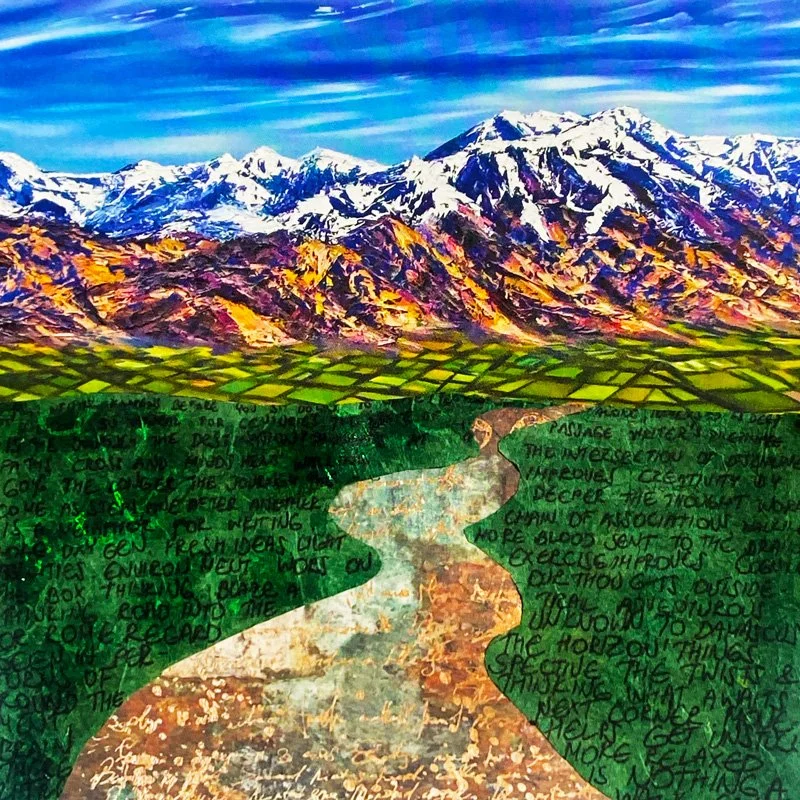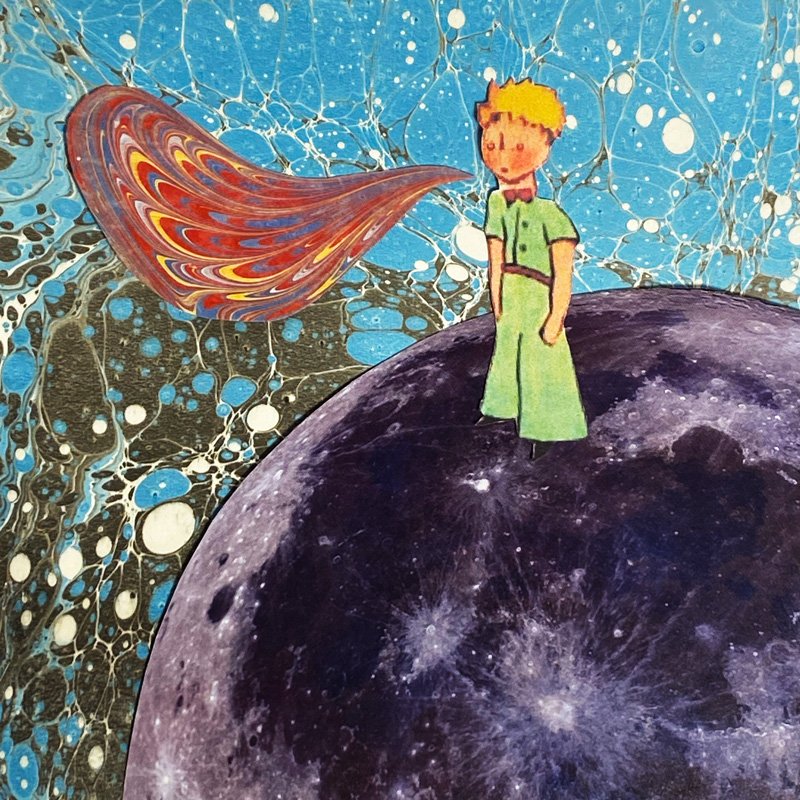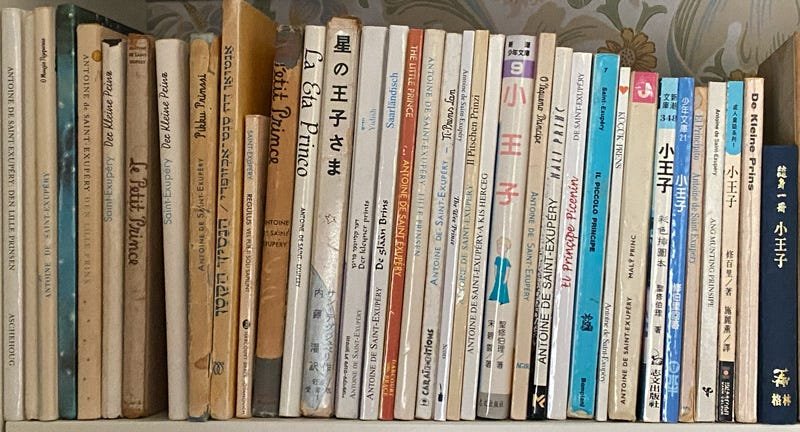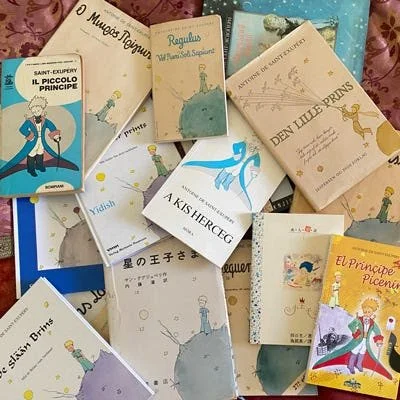The theme of the fourth Creativity Catalyst module is “Move Around,” an exhortation that I’ve taken rather literally by traveling to Australia for ten days! Sydney is a great city for walking — not to mention bussing, biking, training, and ferrying — and my notebook has been happily accompanying me to all manner of cafes, museums, beaches, and other lovely writing spots.
If you’re like me, you may find that some your best thinking-about-writing happens when you’re out walking. Paradoxically, however, the act of walking is not conducive to actually writing. Sure, you can record your thoughts on your phone as you walk and write them down later, or you can stop for a while to scribble down your brilliant ideas (if you’ve remembered to bring along a notebook); but at that point you’re no longer really walking, are you?
Conversely, you may find that some of your best writing happens just after you’ve been engaged in physical activities that don’t involve thinking-about-writing. Sometimes your brain needs a break so that you can return to your writing with a clean mental slate.
In this post, I draw a distinction between mindful walking — when you deliberately focus on your body, your senses, and the world around you as you walk — and writingful walking, when your body is moving forward but your thoughts are consciously turned inward. Go for mindful walks when you want to clear your head and for writingful walks when you want to push your ideas in new creative directions. Both kinds of walking are good for you, after all!
To finish off, I’ve included links to some walkingful reading materials that explore in greater depth the many historical, conceptual, and metaphysical connections between walking and writing.
Enjoy!
Mindful walking
The phrase mindful walking is something of a misnomer, as the meditative practice of mindfulness — often described as “living in the moment” — involves attending to your physical senses rather than to the messy machinations of your intellect. Mindful walking recalibrates your body, refocuses your brain, and reminds you of the power of sensory experience to engage our emotions (a useful principle for any writer to keep in mind).
Mindfulness feeds your writing by deflecting you from thinking about your writing. Here are some prompts you can try next time you stand up from your desk to go for a walk:
Bodyful walking
As you walk, pay attention to how you hold your body as you move through space. Spend some time taking your mind through a slow body scan, deliberately sending your awareness first to your feet as they flex and fall, then to the pivoting of your ankles, the stretching of your calf muscles, the hingeing of your knees, and so on, all the way through to the top of your head. Think about the pendular swing of your arms, the line of your spine, the way you hold your head, the slope of your shoulders: are they hunched up near your ears as you walk, or are they relaxed and mobile? Bodyful movement develops your postural awareness and prepares you for the hard physical work of sitting and writing.Senseful walking
Hone in on each of your senses in turn: sight, sound, smell, taste, touch. For example, you could bring your attention to a single color, or to visual patterns in the landscape — I like focusing on the interplay of straight lines and curved lines — or to the many different sounds that you hear when you tune in to notice them: your footfalls, your breath, the wind in your ears. How many different scents can you pick out as you walk past a garden or a market stall? What textures can you touch as you travel?Spaceful walking
Trace a horizontal line through space as you walk, attending to the vertical volumes that rise above or fall away below you along your route. Notice the layers of the landscape you’re moving through: what’s happening at ground level, at tree level, at cloud level? Walk in a straight line, in circles, up and down stairs, in zigzags. You can add an aleatory dimension to your travels through space by flipping a coin at every street corner — heads means turn right, tails means turns left — and following wherecwe chance leads you.Artful walking
Look around you with an artist’s eye as you walk. Stop to photograph intriguing objects and scenes, or at least to frame them with your eye. Listen to the music of the landscape: chattering birds high above you; a radio blaring from a passing car. Notice the art and artistry all around you — architectural details, street signs, posters — and create your own works of art through the transformational magic of your gaze.
Freddieful walking
Not to be confused with fretful walking! My wee dog Freddie reminds me daily to savor the pleasures of the material world. While I may not share his delight in certain odors — rotten food and dog pee come to mind — it can be a lot of fun to try to picture and sense the world through his merry little eyes.
The only rule involved in mindful walking (if you want rules at all) is that you must not think about your writing as you walk. As soon as your mind begins to stray, simply bring your thoughts back to the designated object of your walk: birds, buildings, body, or whatever else you’ve decided to focus on. If you get bored, shift your focus to something else: flowerful walking, peopleful walking, birdful walking, architectureful walking, dogful walking (paying attention to other people’s dogs, not just your own) — the possibilities are endless!
Writingful walking
“Simply bring your thoughts back to the designated object of your walk” — hah! That’s easier said than done. Thoughts have a pesky habit of following their own path, especially when our bodies are moving too. So you may wish to put a time limit on your first attempt at a mindfulness walk — say, 5 or 10 minutes — then let your thoughts off leash for a while.
When you’re ready to shift to “writingful walking,” take a moment to recalibrate, then set yourself a writing-related topic to focus on or an issue to work through. I enjoy brainstorming about new projects while I walk; the rhythm of my legs and arms sets my ideas flowing, and it’s easy for me to retain a few key bullet points on my phone or in my head (as I did, for example, with the list of “mindful walking” ideas above). When I try to compose fully-formed sentences and paragraphs, by contrast, I’ve found that the words tend to unravel as soon as I start recording them or writing them down; so I’ve stopped trying.
Writingful walking can be solitary or social, freewheeling or focused. It requires just two key ingredients: time and space. In Writing with Pleasure, I observed that “the contemplative rhythms of walking demand ample investments of unstructured time, historically a commodity more readily available to men than to women”:
William Wordsworth striding over daffodil-covered hillsides; Charles Baudelaire flâneuring through the arcades of Paris; Charles Darwin wearing a groove in the section of his garden path where he paced up and down for several hours a day; Wallace Stevens jotting down snippets of poetry while he walked to his job as an insurance executive, where he gave them to his secretary to type up. (Writing with Pleasure, p. 52)
Time remains a rare and precious commodity for nearly every writer I know; but space for generative movement is generally easier to come by. Note that the romantic landscapes of Wordsworth and Baudelaire — the mountains of the Lake District, the grand shopping arcades1 of Paris — find their mundane equivalents in Darwin’s well-worn garden path and Stevens’ daily walk to work through the decidedly unromantic streets of Hartford, Connecticut.
Writingful walking allows you to double-dip on both time and space: you’re writing and walking, moving your words and your body, rather than having to choose between intellectual labor and physical exercise. How efficient! But remember, you can’t be hyperproductive all the time. Writingful walking activates the writing brain; mindful walking clears it; but sometimes it’s best just to go for a walk and let your mind wander where it will.
Walkingful reading
The relationship between writing and walking has been the subject of numerous books, articles, and scientific studies,
from Merlin Coverley’s cultural history of the writer as walker (The Art of Wandering) to Frédéric Gros’s lyrical meditation on living and thinking in motion (A Philosophy of Walking) to Stephanie Springgay and Sarah E. Truman’s dense account of how carefully staged “research-creation events” can help participants navigate their way through tricky topics such as “settler colonialism, affective labour, transspecies, participation, racial geographies and counter-cartographies, youth literacy, environmental education, and collaborative writing (Walking Methodologies in a More-than-human World: WalkingLab). (Writing with Pleasure, p. 52)
You can find a whole section on Writing and the Body in the Bookshop on my website; don’t miss Cheryl Pallant’s Writing and the Body in Motion: Awakening Voice through Somatic Practice (not just on walking!) and Tim Ingold’s brilliant Being Alive: Essays on Movement, Knowledge, and Description.
My favorite short article on writing is On Walking and Thinking: Two Walks Across the Page by writing scholars Evija Trofimova and Sophie Nicholls (the latter’s Substack newsletter Dear Writing is a weekly delight). Sophie likens unstructured freewriting to a ramble in the woods near her home in Yorkshire:
The woods are full of darkness and danger, grandmother’s cottage, wild beasts, witches, poisonous fruits. The woods are where traps are laid, where children wander and get lost, where enchantments befall us. By stepping into the woods, we surrender to not knowing, to walking off the path and into the depths of our imagination.
Evija, by contrast, summons up the flat, wide-open landscape of her native Latvia:
When I’m stuck, I crave openness and space. . . . Here, where the landscape is simple and spacious, my thoughts can breathe. Ideas quietly graze as I move through them. The country road is under my feet and I know exactly where I’m heading. . . . I need to be able to look far into that hazy distance to get my sense of seeing things “in depth.”
I used a walking-and-writing line drawing by Evija as the starting point for my paper collage this week, which depicts a word-strewn path that draws us enticingly forward into unknown landscapes. Was there ever a better description of writingful walking — or, indeed, of walkingful reading?
This post was originally published on my free Substack newsletter, Helen’s Word. Subscribe here to access my full Substack archive and get weekly writing-related news and inspiration delivered straight to your inbox.
WriteSPACE members enjoy a complimentary subscription to Helen’s Word as part of their membership, which costs just USD $12.50 per month on the annual plan. Not a member? Sign up now for a free 30-day trial!

















